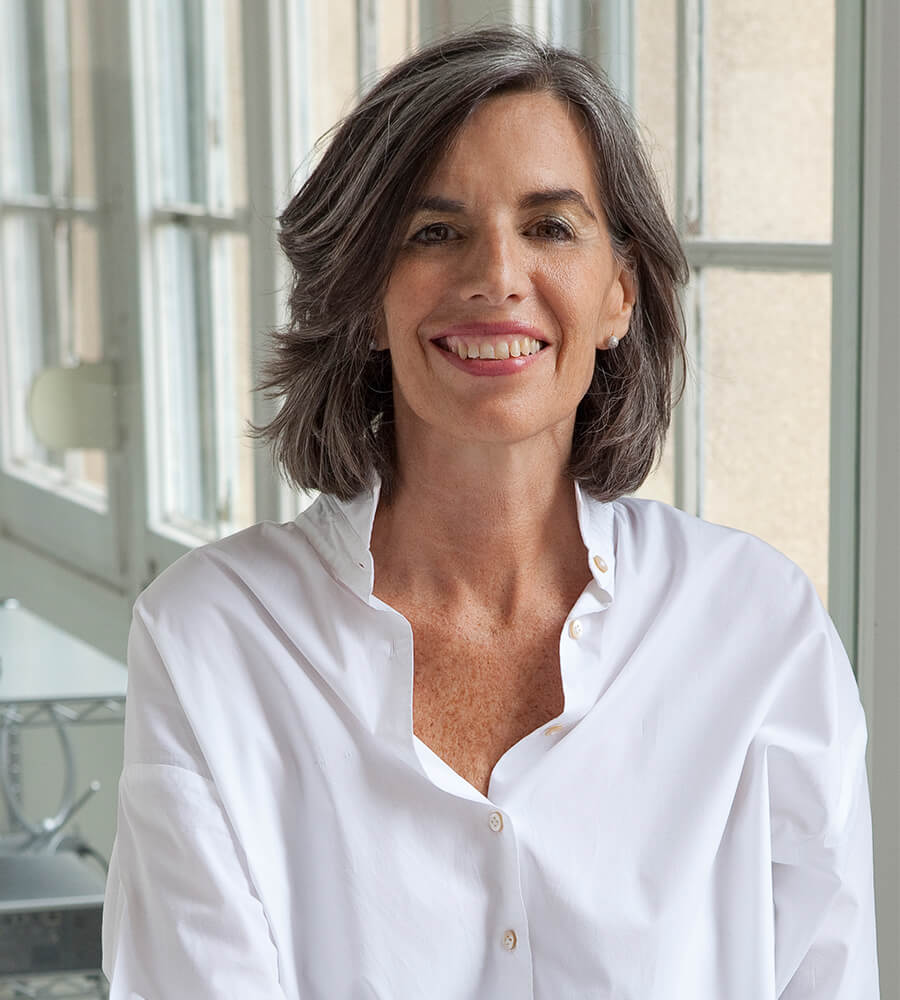Nanimarquina has been pushing the boundaries of contemporary design since 1987. LUISAVIAROMA talks to Founder and Designer Nani Marquina about craftsmanship, sustainability, and making rugs that people fall in love with.
Tell us a bit about yourself. How did you decide to pursue a creative career?
My father Rafael Marquina played a huge part in where I am today. He was a pioneer, one of the first industrial designers in Spain. Every day when he got home with new designs he had created, I was totally captivated, and he passed on to me his great passion – designing.
Collaboration brings freshness, inspiration, experimentation, and guarantees the diversity of styles in our catalogue.
You launched Nanimarquina in 1987. How has the company evolved since then?
When I created Nanimarquina, the manufacturing process was mechanical and research so difficult and we were limited in quality, colors, textures and shapes. One of the biggest challenges of my career came in 1993 when we moved all our production to India after discovering the country’s excellent craftsmanship and unlimited possibilities for innovation. The trip allowed us to know the origin and the true essence of a rug, and also changed our point of view on the meaning of them.
Social responsibility is a central value of Nanimarquina. Tell us about some of your projects and initiatives related to sustainable production.
From my first trip to underdeveloped countries, I felt the need to get involved in some way. Our work with organisations such as Care&Fair and the implementation of initiatives such as the Kala Project allow us to take a step further in improving standards of living, working conditions and helping to build a brighter future for those directly involved in the process of producing Nanimarquina rugs.
How does the creative process work between Nanimarquina and designer collaborators?
Collaboration brings freshness, inspiration, experimentation, and guarantees the diversity of styles in our catalogue. Usually the designers contact us directly with a design, and then we work together through a creative process looking for the perfect design and the best way to produce it. When different creative minds work together, so many new ideas grow, which is so enriching. The new views that a designer can have of a rug are very useful; because they don’t know the difficulties of making a rug and they are sometimes more creative and more innovative.
Your brand is known for innovation. What are some of the innovations coming out of Nanimarquina today?
Throughout our history, we have avoided seeing the rug only as a product, instead viewing each piece as a concept or a message. Recently, we have focused more on the harmony between tradition and the contemporary, revisiting old craft techniques and mixing them with the most innovative design. One example is the Losanges kilim by Ronan and Erwan Bouroullec or the Rabari Collection by Doshi Levien Studio. Another fundamental pillar is to translate the value of limitless color, such as is the case of Digit!
Teach us something we don’t know about producing rugs.
Something that makes perfect sense but initially surprised me was that specific characteristics of a rug could be different due to climate, geography, flora and fauna, but culture isn’t such a large factor. In other words, in Argentina and New Zealand there are sheep grazing in rich pastures, the resulting wool is truly beautiful. On the other hand, in Burma, there is a lack of livestock and therefore palm fibers are usually employed to make rugs.
Special thanks to: Nani Marquina
This interview has been edited and condensed.



